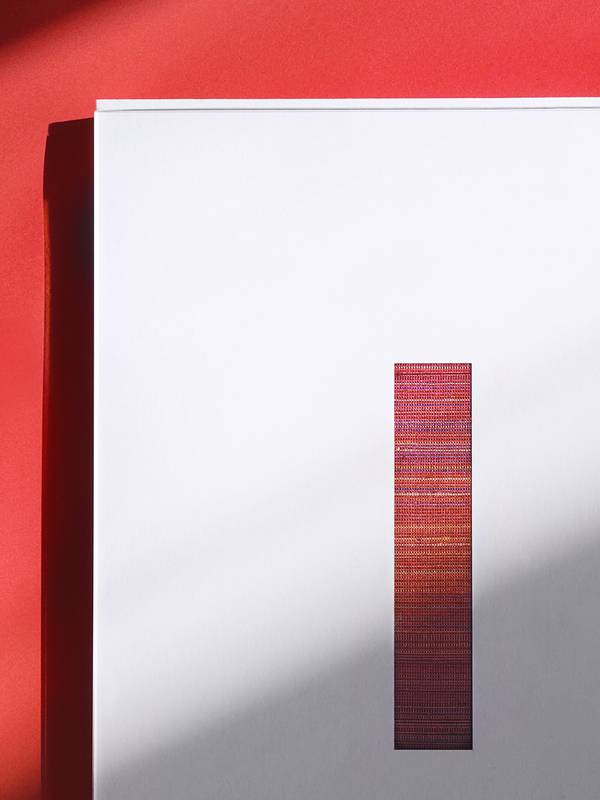
20
A Special Edition Led by Chance
For the 30th anniversary of the death of the novelist Yoshiko Shibaki, a private publishing company called Shoshiki Suiiki published a collection of short stories, “Yoshiko Shibaki- A Collection of Short Stories, New Days.” The book comes in a Regular Edition and a Special Edition, and here, we will continue from before and introduce how the Special Edition came to be.
“Flowers and Women” & “Colors and Women” The Commonality Between Ms. Shibaki and Ms. Shimura
It was just after I was approached for the creation of Ms. Shibaki’s collection. Niijima came across a collection of essays called “Isshoku Isshou” (one color/one life) by Fukumi Shimura, a textile-dyeing artist and an essayist. A friend had recommended the book by chance, and Niijima started reading the book on the bullet train to Kyoto on personal business. Niijima felt instantly absorbed by the words in the book that could only be expressed by someone who dealt with “colors” the entire life. Niijima said, “The ‘colors’ that Ms. Shimura talks about is created through receiving the lives of plants. Therefore, these colors must be able to express life. Reading this, I felt how Ms. Shimura sincerely faced ‘the creature called colors.’” He added, “It was just when I was reading Ms. Shibaki’s work, so I felt a strong connection between Ms. Shibaki and Ms. Shimura’s works in terms of how Ms. Shimura’s book had the superimposition of colors and female figures, such as the color of a girl whose buds are about to bloom, the redness of a woman with the wisdom of life, and the color of a married woman soft and struggling to live.” In Ms. Shibaki’s collection flowers such as white lilies, plum blossoms, white bush clovers, roses, irises and gymnasters appear. Ms. Shibaki also superimposes flowers and women in her works.
Coming Across Gallery Atelier Shimura
From this commonality that Niijima intuitively felt, Niijima wondered if it would be possible to create a book that conveys the life of a woman using “colors” of plant dyeing. He immediately did some research on Ms. Fukumi Shimura on the bullet train, and to his surprise, he learned that there was a gallery in Kyoto called Atelier Shimura that inherited Ms. Shimura’s philosophy on dyeing and weaving, so he decided to visit on the that same day. Niijima told the energetic woman in the store how he visited the store because he was struck by Ms. Shimura’s writings, she gave Niijima information about plant dyeing, and the precious handwork of weaving dyed threads on a loom. The depth of the colors, the layer of colors woven by the threads, and the thin, soft fabric that you can see through to the other side were so beautifully enriching that made you want to keep looking at it and touching it. As a bookbinder, Niijima felt excitement throughout his entire body wanting to make a book using this material. However, it was too difficult to budget such a precious fabric made by hand in the mass production world, where each book is sold for several thousand yen in the regular market, so it was too impractical to make a book through plant dyeing.
A Big Break to Make the Special Edition
The production of the Regular Edition was going well, and it was near the end of the process. Niijima still wondered if there was anything more he could do in making this book, and read a collection essays titled, “Oriori no Tabi” by Ms. Shibaki, trying to get some hints by knowing about the worldbiew of Ms. Shibaki more. As he turned the pages, he found a story of when Ms. Shibaki visited a workshop of a textile dyeing artist in Saga, Kyoto. At that moment, he thought to himself, “Huh? Could this be referring to Fukumi Shimura?” Although the name was not mentioned in the text, both Ms. Shibaki and Ms. Shimura lived in the same era since before the war. It would not be surprising if the two were connected. Thinking this, Niijima couldn’t stand any longer and sent an e-mail to the person at Atelier Shimura as the two exchanged business cards, and found out that the text was indeed referring to Fukumi Shimura and that they had a friendship. It was also found out that Ms. Shimura’s work was used on the cover of Ms. Shibaki’s “Gunjo no Umi.”
“This time, too, the dots were connected.” Niijima’s book production begins with someone’s wish to “make a book” or from Niijima’s “wish to put certain words into a book.” When doing this, he incorporates the sensibilities and feelings inside the other person into his own, and then he finishes the book using the material of paper. As Niijima exchanged opinions and focused on bookmaking, there were oftentimes mysterious moments when dots and dots connected. The connection between Ms. Shibaki and Ms. Shimura this time was either a coincidence or fate but it was as if something was guiding the process. This inspired Niijima to make the Special Edition of the book no matter what, so he made a proposal to Mr. Kitada and people at Atelier Shimura, and this special edition was born.
My Reason for Continuing to Make Books
Ms. Shimura expresses the redness died with a plant called Suo as “the color of a woman’s core.” It is a color with “deep female emotion” with a variety of characters such as a girl, a saint, or a prostitute. The Special Edition uses red threads dyed with Suho which are intertwined with various colors with depths, woven into a fabric for the entire cover. Each Special Edition is hard-bound by Niijima and is packaged in a couple of boxes with lids to prevent tears and fading.
In this project, Niijima talked about the existence of books in his own words more deeply than usual. “Nowadays, the environment surrounding the book industry is very tough and I feel every day how the role that paper books play is gradually changing. Still, I believe paper books have unique roles which could perhaps be described as putting someone’s energy on to the paper. Then, as Ms. Shimura viewed “color” as a “living thing” that contains life, I also want to work with “books” as a living thing that contains the energy of all the people involved. Above all, creating a book is profound, and it expands the world. I hope I can convey that to others by continuing to create books.”
The Special Edition of “New Days” was born because dots were connected and people of different ages and generations met: Ms. Shibaki, Mr. Kitada, Ms. Shimura, Atelier Shimura, and Niijima. The time of the meeting was fated to be perfectly precise, and thinking back, it feels as if it was decided from the start that the meeting would happen for the making of this book. In addition to the book’s beauty and the content of the novel, our wish is that these stories in the background will also deeply touch the hearts of those who read it.
Photo : Maki Umaba
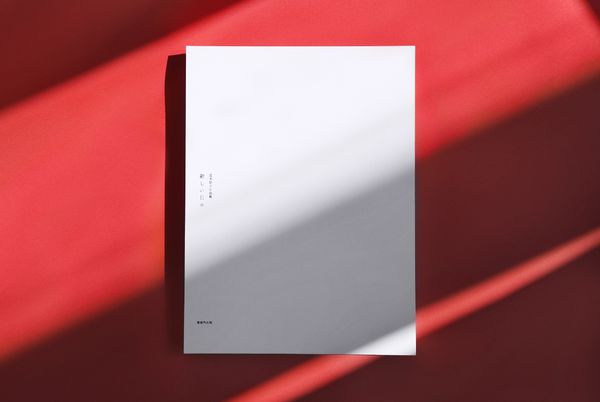
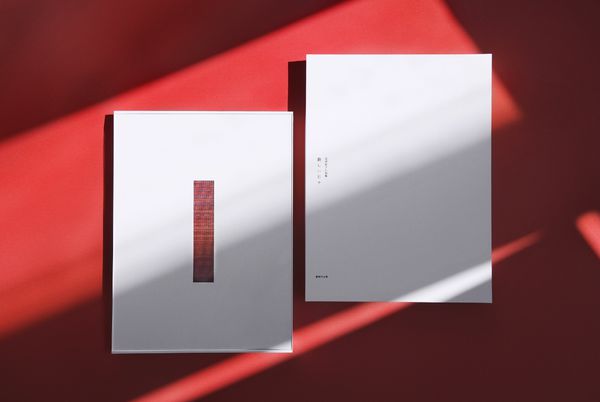

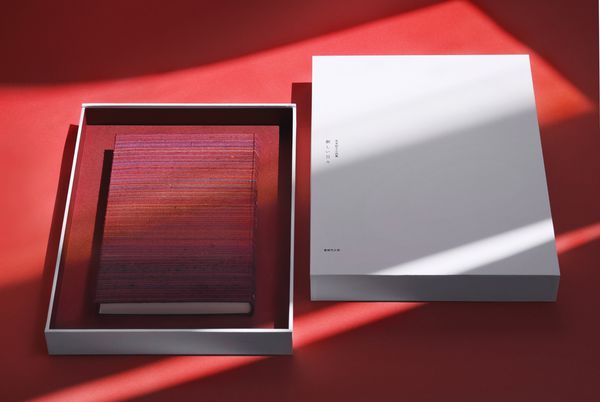
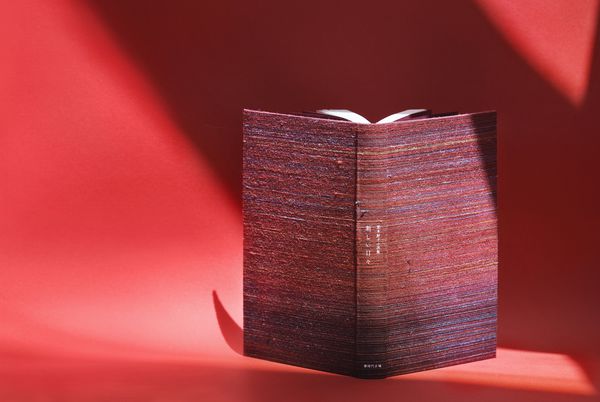
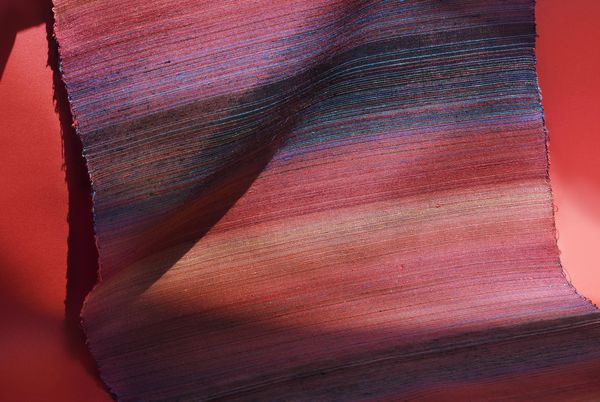
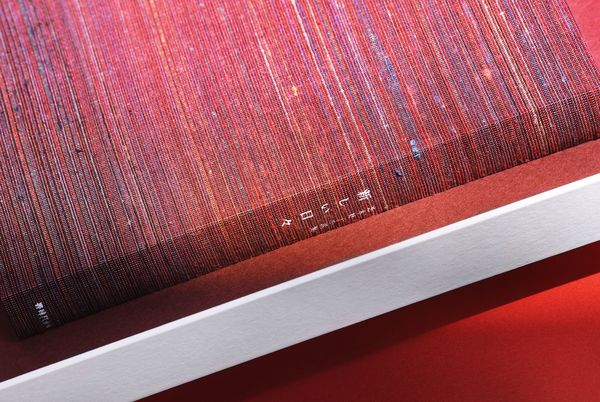
担当 : 新島龍彦
今回の特装版の制作は多くの挑戦があったので、本を作る喜びと楽しさ、実現への難しさと厳しさを強く感じる制作でした。それでも、アトリエシムラさんの裂の美しさと向き合って作業をしていると、そういった苦労の全てがふっと報われるような喜びがこみ上げてきます。こうしてその美しさと関わることができて、改めて本づくりは幸福な仕事だなと感じました。